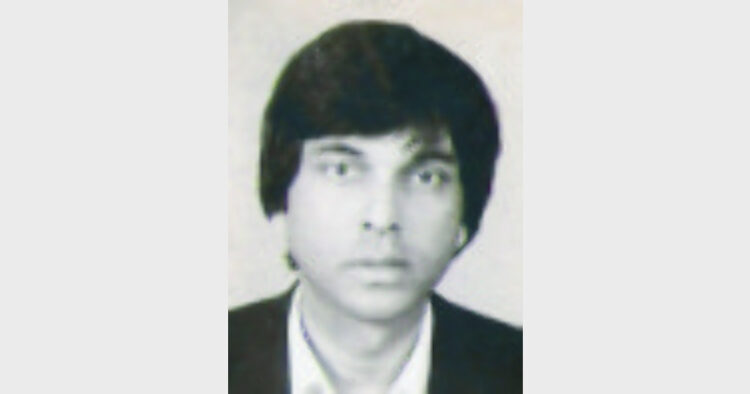Christian imperialism comes to India – II
Dr Gautam Sen
 Politicians whose political careers the church sponsors and also, as a corollary, helped achieve vast wealth through theft then allows bribery to be financed locally, as in the case of Andhra Pradesh. The church gains access to the stolen resources and uses them to facilitate religious conversion, i.e. the victims of church subversion end up paying for it as well.
Politicians whose political careers the church sponsors and also, as a corollary, helped achieve vast wealth through theft then allows bribery to be financed locally, as in the case of Andhra Pradesh. The church gains access to the stolen resources and uses them to facilitate religious conversion, i.e. the victims of church subversion end up paying for it as well.
The Catholic Church has always promoted religious conversion through a phenomenon now described as inculturation, although it is as old as the church of Peter itself. Providing relief to the poor has been a source of huge political strength for the Christianity since its very inception, as even the last pagan Roman emperor Julian recognised, and the basis for its claim to conscience. Along with it, the church established a tradition of insinuating itself with pre-existing local pagan practice and custom, which has proved extraordinarily adept in deceiving and alluring potential converts to their faith. These are methods that other Christian denominations have also adopted, but the Vatican raised it to an art form of immense efficacy. This is how it managed to turn Korea into a largely Christian country and similar duplicity has been practised across Asia and Africa. In the latter, the number of Christians rose from 90 million at the beginning of the 20th century to over 350 million today. Walking around Bhayander, in the outskirts of Mumbai recently, I came across what appeared to be idols of Radha and Krishna along the roadside, only to discover, on closer examination, that they were, in fact, Jesus and Mary masquerading as traditional Hindu idols.
Nowadays, Christian clergy across India can be seen in the traditional ochre robes of Hindu holy men as well as sporting religious marks on their foreheads and church entrances adorn the sacred Hindu symbol Om. Statues of Jesus and Mary are often placed circumspectly alongside Hindu idols in some Hindu temples in acts of outrageous duplicity. Befuddled Hindus acquiesce because they revere the holy in all its incarnations, even if they prefer their own particular path of worship. But such acts of deception are a prelude to their total extirpation by Christian aggressors and merit violent resistance. Having effectively extinguished European Jewry the church seeks to destroy remnants of the Hindu intelligentsia, which it regards as an obstinate intellectual and spiritual dissenter against its world historical struggle for domination. In addition, some Christian converts to Hinduism are in fact infiltrators, sowing confusion by duplicitously re-interpreting Hindu scriptures and feigning empathy. And, revealingly, some are advocates of interfaith dialogue, a purely diversionary subterfuge to confound Hindus. More alarmingly, one infamous American supposed convert to Hinduism advocates formal Hindu concordats with the church to legitimise religious conversion, which would profoundly compromise their ability resist its diabolical machinations within India.
Interfaith dialogue was sponsored early in the 20th century as a vehicle for disarming and neutralising other religious dispensations, especially, pagans, whom Christians intended to convert. They have never recognised the validity of Hinduism and cognate faiths like Jainism, Buddhism and Sikhism. And Christians have steadfastly refused to cease evangelical activity within these communities, or even discuss the issue at their own official interfaith conclaves. Yet they persist in engaging in cynical dialogue with these faiths, sipping tea together and dwelling on the divine, while preparing to destroy them altogether. Indeed, once they have acquired numerical preponderance they have resorted to legislation, by the state authority, to curb the faith of the remaining non-Christian communities, which had been turned into a minority in their own country because of Christian evangelism. This is happening to Buddhists in Korea and indeed secular ideas like evolution are being removed from Korean school textbooks at the behest of the church. And both Christian and Muslim majority provinces of India only permit Hindu worship at their discretion.
The spread of the tentacles of the church in Nepal in the past two decades was helped by an archaic and corrupt monarchy and astonishingly semi-literate political leadership. It seems highly likely that Maoism in Nepal became a vehicle to destabilise the country, allowing Christian evangelists to take advantage of genuine local grievances that derived from the total failure of governance and resulting poverty, accentuated by a population explosion. They became the patrons of Maoism, a phenomenon also evident from their human rights propaganda on behalf of Naxalites in India. For Christian missionaries, Nepal and its uneducated and poor, were easy targets for conversion, en masse, like the Nagas and Mizos of India. And the US itself is seeking a foothold in the region as well, adjacent to the Chinese border.
Now foreign NGOs and Christian evangelists have successfully implanted the notion of political rights for ethnic and caste groups across the whole of Nepal and made a national consensus impossible and rendered it virtually ungovernable. Simultaneously, conversions to Christianity are proceeding apace, often through Korean missionaries who can blend easily with the local population owing to their physical appearance. Shockingly, payments were accepted by leading Nepali politicians from the US Kathmandu embassy, clearly on behalf of Christian evangelists, to remove the word Hindu from the Nepali Constitution and declare the country secular. Indian government policy in Nepal also facilitated outcomes sought by the church and the US through either complete ineptitude or deliberate complicity to end Nepal’s Hindu identity. Of course the adoption of policies sought by the church could have been enforced by routing them through India’s quasi Catholic Congress party leadership.
(Concluded)
(The writer is President, World Association of Hindu Academicians)













Comments